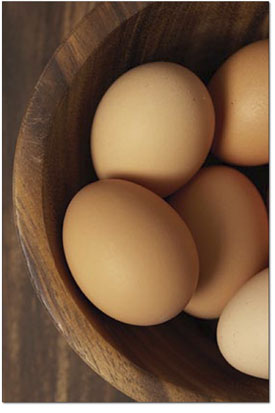| ||
The slow boat from China
by Chef Boy Ari My friend Bill is a locavore, eating as much as possible from within a couple hundred miles of his home in northern Vermont. Last winter, he and his family feasted on things like roots, tubers, squash, stored veggies, meat, cheese, eggs and apple cider, while foregoing things like sushi, California-grown greens and orange juice. This diet is motivated largely by the desire to reduce the amount of greenhouse gasses released by long-distance transport of his food. But don’t call Bill and his family martyrs. Their effort is rewarded by a dramatic increase, he says, in quality of life. Unlike their East Coast forefathers, these folks aren’t puritanical. They allow certain ingredients from faraway places via a loophole they call the “Marco Polo Exception.” “Anything that could have come back from the orient in a saddle bag is OK,” explains Bill. This means small items that won’t spoil easily – like spices – are allowed because they don’t require fast, refrigerated transport. As a fellow locavore, I agree that this practice greatly improves quality of life. And I have a loophole similar to the Marco Polo Exception, which I call “the slow boat rule.” It means essentially the same thing, except I allow cargo that might not fit into a saddlebag, as long as it requires no refrigeration or speedy transport. So a big jug of olive oil is OK, or a pile of coconuts. A slow boat is the most efficient mode of petroleum-fueled transportation that you can get – although ideally, the slow boat would be a sailboat. The slow boat rule prevents one of the more insidious manifestations of global trade: the costly transport of items that grow in your region but are currently out of season, such as Chilean strawberries or New Zealand apples. We have a multi-month season of fresh strawberries every summer. If you want to eat them year-round, stash them away by freezing, jamming, drying or otherwise preserving them. And you can do the same with raspberries, blueberries, cherries, plums, apricots, apples, pears, etc. Acquiring enough strawberries to put away a year’s worth will mean a trip to a local U-pick farm or a farmers’ market, followed by hours in the kitchen, processing it into leather, jam, whole frozen fruit, dried whole fruit and jam. All this at the expense, perhaps, of some other recreational Saturday afternoon pursuit. Or you could consider the stashing of those berries as your recreational pursuit. The trips to the market or the U-pick will make you all kinds of new friends, and generally bring you in touch with your community in ways you never would in a supermarket. Some items, meanwhile, like black pepper or curry powder, can’t be cultivated locally. Curry is a general term for a spice mixture that often includes things like cardamom, cumin, coriander, turmeric and cloves. It’s amazing how spices like this can transform local ingredients like lamb, yogurt, onions and garlic into something straight outta Calcutta. On a recent Sunday morning, I put my slow boat rule to the test when some friends came over for brunch. We feasted on quiche (made with locally grown eggs, with local spinach in the local wheat crust and local onions and garlic inside), home-baked bread with strawberry/rhubarb preserves, bacon-fried elk sausage, last summer’s apple cider, and my slow-boat secret weapon: curried eggs. To make my curried eggs, you want the most local eggs you can find – these tend to have delightfully rich yellow yolks. Crack them into a bowl, and then crush the shells and drop the crumbs into the chicken bucket (formerly the compost bucket, before you got chickens). You crush the shells like this so your chickens will get their calcium back without realizing that they’re pecking at their own eggshells – you don’t want them to get the idea that they should peck at their own eggs. With a fork, beat some Patak’s brand hot curry paste into the eggs – about one big tablespoon per four eggs. Curry paste is not as slow-boat as curry powder – the water content and the jar make it heavier to transport, and the jar is resource intensive to make – but I’m no puritan. Patak’s has the right flavor, and one of these days I’ll figure out how to make it myself with dry raw ingredients. Beat some minced garlic in the Patak’s egg mixture, and then heat local butter in a pan on medium heat, adding a quart bag of newly thawed frozen broccoli florets from last summer. When the broccoli gets warm, add the garlic-curried eggs and scramble. We drank slow boat coffee as we lazed around the table, making the best use of a Sunday I can imagine. The table sagged beneath the weight of this good food, garnished with pickled peppers and salsa, and served to good friends, in good cheer, sharing good news and bad. We were living the locavore’s dream. •
|
In this week's issue...
- May 15, 2025
- End of the trail
Despite tariff pause, Colorado bike company can’t hang on through supply chain chaos
- May 8, 2025
- Shared pain
Dismal trend highlights need to cut usage in Upper Basin, too
- April 24, 2025
- A tale of two bills
Nuclear gets all the hype, but optimizing infrastructure will have bigger impact


